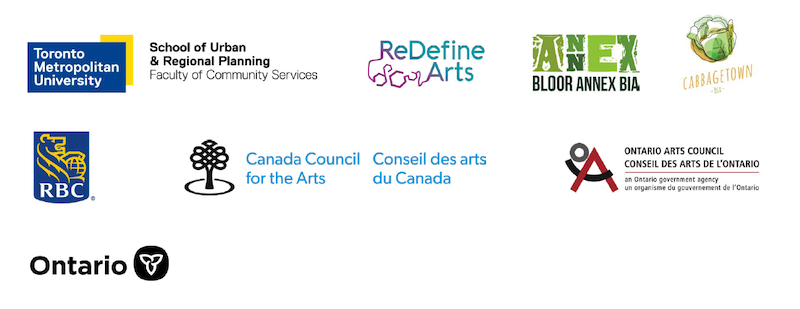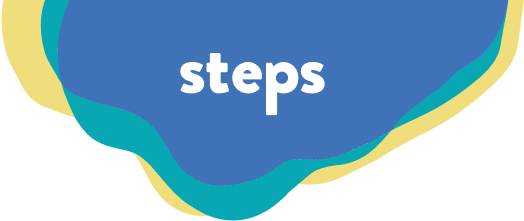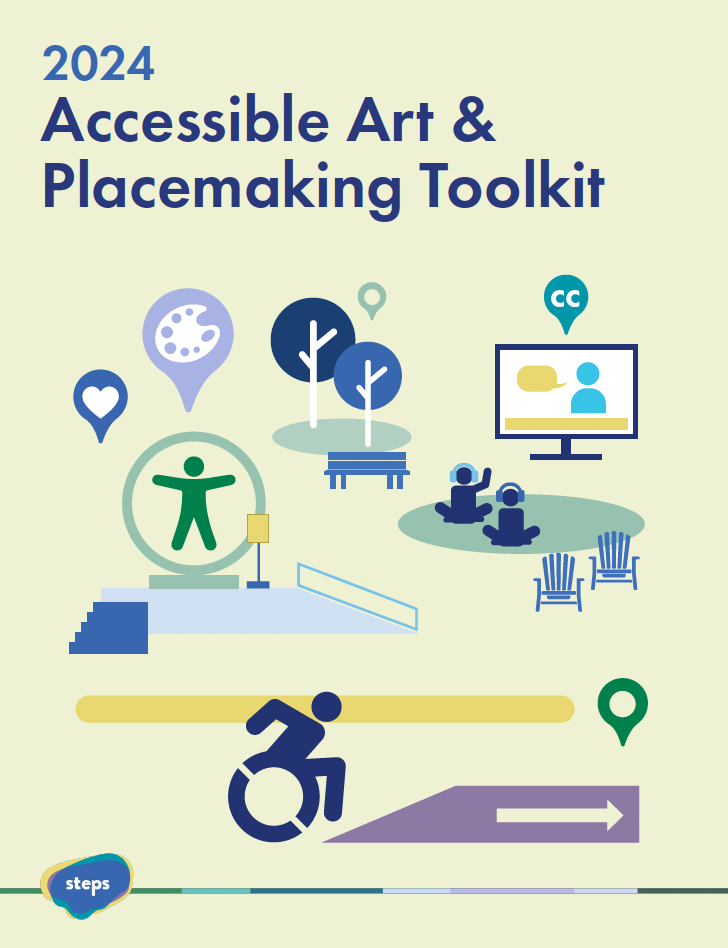Accessible Art and Placemaking
The Accessible Art and Placemaking Project explores the ways art can be used to make public spaces accessible to people of all abilities. The project involves the review of existing research and consultation with d/Deaf and Disabled experts active in the arts and urban planning communities.
In the second phase, we will use these learnings to develop two public art pilot projects in two downtown Toronto neighbourhoods, in partnership with the Bloor Annex Business Improvement Area (BIA) and the Cabbagetown Business Improvement Area (BIA).
The final phase is the publication of a report and toolkit that can be used when planning public art and placemaking projects. The intention of the Accessible Art and Placemaking Toolkit is to support you in making public spaces more accessible through art and cultural programs.
Photo credit: Pablo Rincon Diaz
Project Updates
Launch of the Accessible Art and Placemaking Toolkit
The Accessible Art and Placemaking Toolkit is now available.
We extend our deepest gratitude to the community leaders, practitioners, advisors, research partners, artists, and pilot project partners for their active participation throughout the development of this toolkit. The research and toolkit were made possible by their knowledge, lived experiences, feedback, and generous support.
We hope this toolkit inspires you to integrate accessible art into public spaces with an accessibility-first mindset. We look forward to seeing this work in action across communities.
If you have questions or feedback about the toolkit, please contact Sophie Mitjavile, Cultural Planning Manager at sophie@stepspublicart.org or via phone (1-888-783-7780 ext. 702).
Accessible art survey (Closed)
Residents and visitors of Toronto’s Bloor Annex or Cabbagetown neighbourhoods were invited to complete surveys for a chance to win a prize and share insights on accessibility needs to shape the creation of new public art installations.
This research was supported by the City of Toronto’s Main Street Innovation Fund and contributes to the accessibility and placemaking toolkit.
Accessible art and placemaking toolkit
This project culminated in the publication of a free public art and placemaking toolkit for Business Improvement Areas (BIAs) that can be used as a guideline for planning and implementing public art initiatives and cultural programming that is accessible to all community members.
Download the Accessible Art and Placemaking Toolkit for your future public art projects as we work towards more welcoming and accessible spaces for everyone.
The toolkit includes:
- Important definitions
- Background research
- What to consider when creating an accessible placemaking project
- Public art pilot study examples with BIAs
- Resource lists and funding sources
- Accessibility tools and references
If you have questions or feedback about the Accessible Art and Placemaking Toolkit, we want to hear from you. Please contact Sophie Mitjavile, Cultural Planning Manager at sophie@stepspublicart.org or via phone (1-888-783-7780 ext. 702).
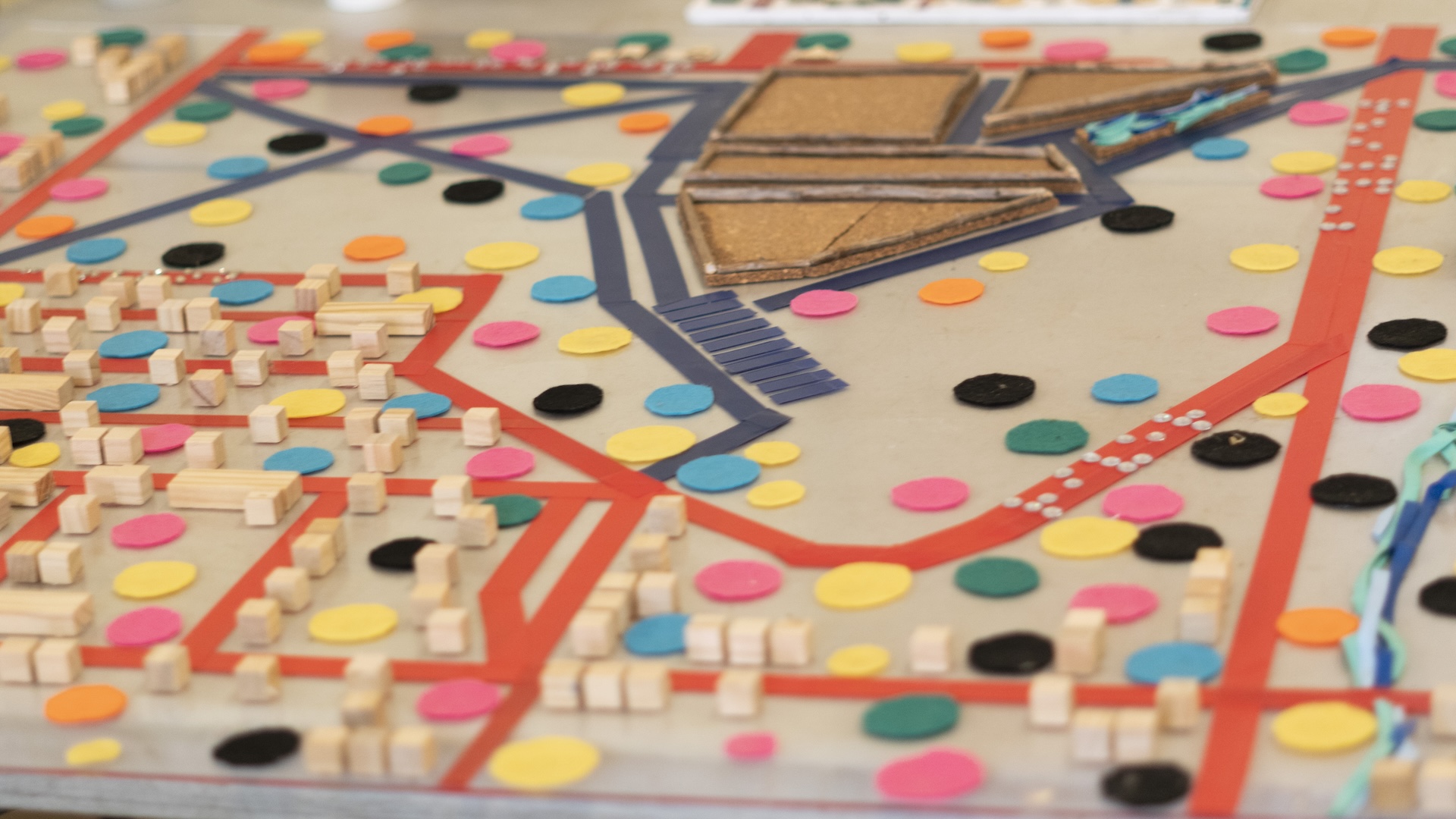
Tactile Map by Anna Camilleri
Photo credit: Pablo Rincon Diaz
Interviews and roundtables
In March and April 2023, STEPS held one-on-one in-depth interviews with d/Deaf and Disabled artists and experts in the arts to provide insights on best practices and challenges for developing accessible art, spaces, and resources. The interviews included conversations with:
- Alex Bulmer (Multidisciplinary Artist)
- Clary Chambers (Spark Clarity)
- Claudette Abrams (Art Curator, Instructor and Multidisciplinary Artist)
- Jenny Hisler (Accessibility Specialist)
- Kate Clark (Planning for Equity, Accessibility and Community Health, Research Unit at Dalhousie University)
- Murray Siple (Multidisciplinary Artist)
- Peter Owusu Ansah (Visual Artist)
- Salima Punjani (Multidisciplinary Artist)
- Sean Lee (Tangled Art + Disability)
We’re grateful for their participation in enriching our research in accessible art and placemaking.
In May 2023, STEPS hosted two virtual roundtable discussions with d/Deaf and Disabled artists and experts in the arts to gather feedback on current barriers to developing accessible art projects, as well as recommendations on how to improve accessibility. Taking place via Zoom, the roundtables also included American Sign Language (ASL) interpretation and live transcription (with other accommodations available upon request).
Findings will shape the final report and toolkit that will be presented to different organizations to enhance accessibility in public art and community projects.
Accessible Art Pilot Studies
As part of the research around accessible art, public art pilot studies were conducted to implement and test the learnings collected throughout this project.
Two public art installations were launched in Business Improvement Areas (BIA) across two Downtown Toronto neighbourhoods. The accessible art pilot studies were informed by the review of existing research, consultation with d/Deaf and Disabled experts in the arts and urban planning, community walks, and surveys conducted with residents and visitors in the selected neighbourhood sites.
Bloor Annex BIA (Downtown Toronto)
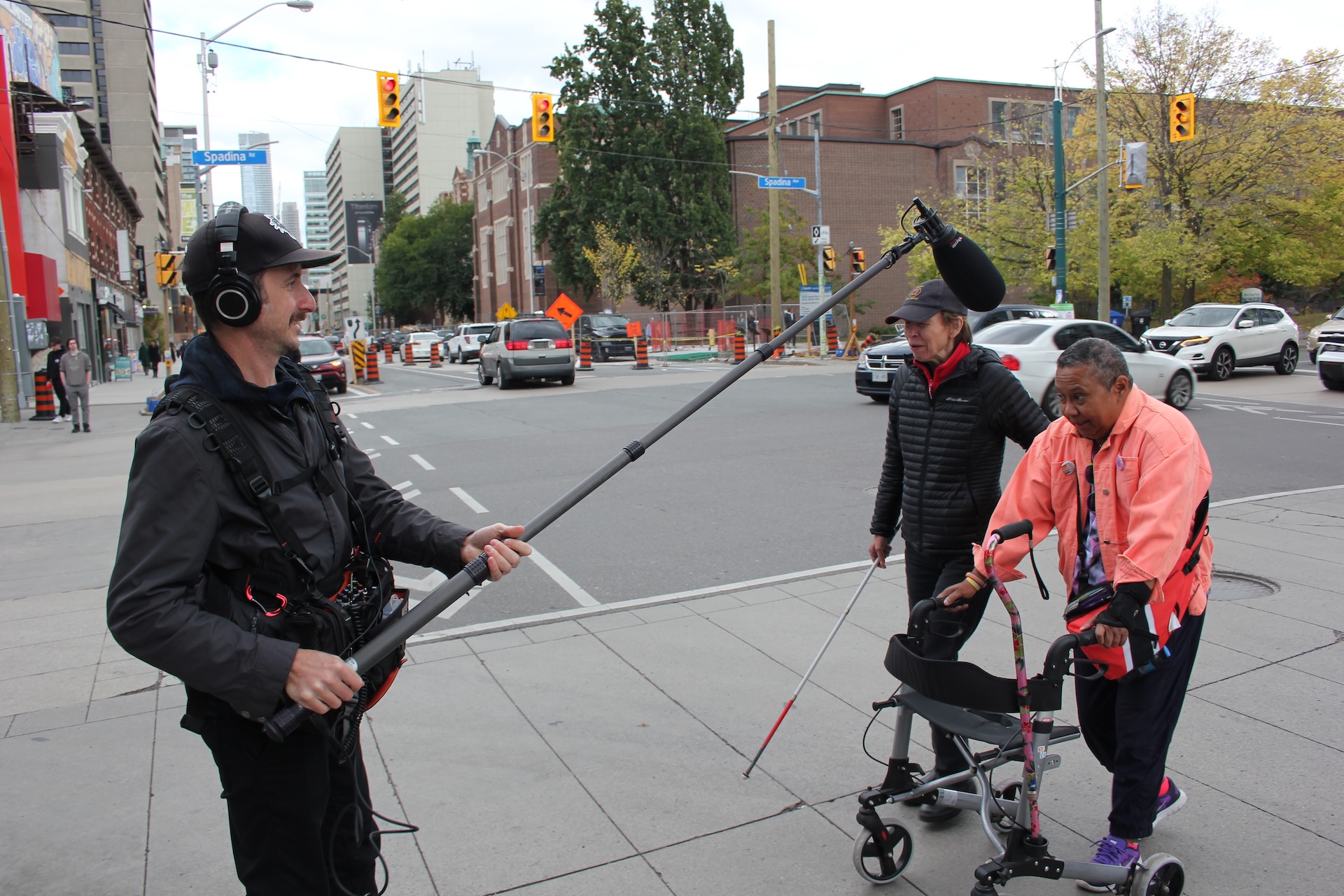
In partnership with the Bloor Annex Business Improvement Area (BIA), ReDefine Arts, and artists Anna Camilleri and Tristan Whiston, the public art and placemaking pilot study was inspired by the project model of May I Take Your Arm?, an interactive performance by Blind Canadian playwright and artist, Alex Bulmer.
Through rich conversations with artists and urban planners who identify as living with a disability, audio narratives (edited by multi-disciplinary artist Tristan Whiston) were created to provide audiences with new ways to engage with the streets along the Bloor Annex neighbourhood. Community members were also invited to the Rediscover Bloor Annex Accessibility Walk led by Alex Bulmer to gather fresh perspectives about the highlights and challenges in and around the Bloor Annex.
Hear the audio narratives through the STEPS App or YouTube Playlist. You can also access individual audio tracks via YouTube below:

Currently, a tactile map (a type of map that is read through touch, such as through textures and braille) is in production that highlights key landmarks within the Bloor Annex BIA.
About the Artists
Anna Camilleri, Alex Bulmer and Tristan R. Whiston are multidisciplinary artists with histories of collaboration that bring together public engagement and creative access.
ReDefine Arts creates and presents interdisciplinary performance, installations and public artworks that advance disability justice, collaboration, and artistic innovation.
Cabbagetown BIA (Toronto’s East End)
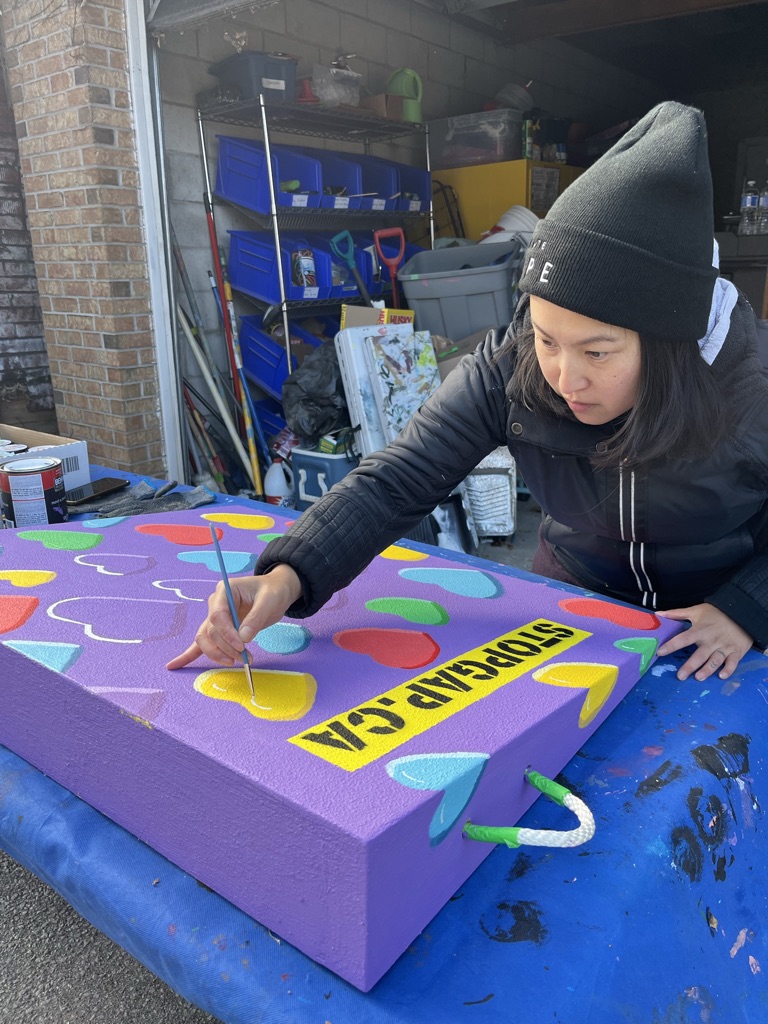
Artist credit: Amanda Lederle
Photo credit: STEPS Public Art
In partnership with the Cabbagetown Business Improvement Area (BIA) and StopGap, artists living with disabilities animated ramps for accessible entry into local businesses and storefronts. The vibrant artwork can be widely seen along the streets that cue as a reminder of the importance of accessibility within our communities.
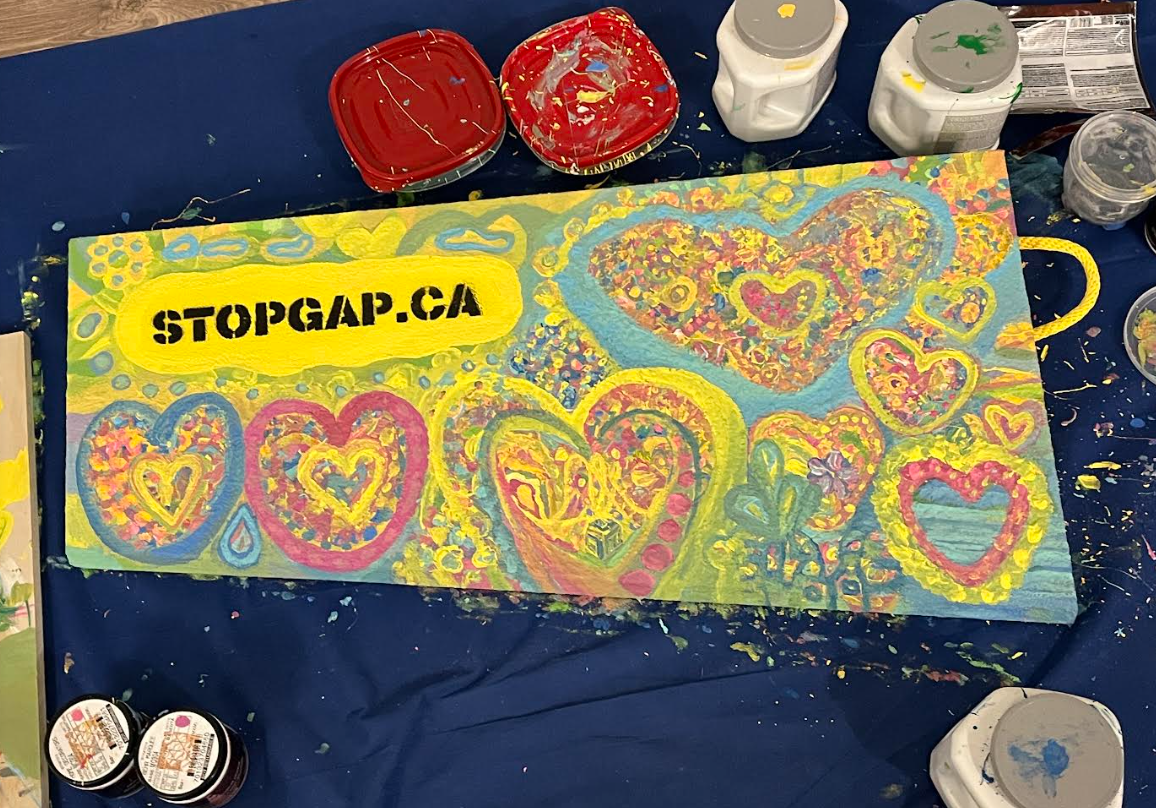
Artist and photo credit: Wendy Lu
Artist panels were installed at each location with QR codes for passersby to scan and listen to hear about the artwork and different lived experiences of the artists through audio tracks, curated by multi-disciplinary artist Tristan Whiston. You can access the audio stories by scanning the QR codes at the location of the ramps or via the STEPS App (linked below):
- We Are Here by Amanda Lederle (195 Carlton Street, Toronto)
- [dis]Ability by Gloria Swain (473 Parliament Street, Toronto)
- The Light of Love, Hope and Peace by Wendy Lu (461 Parliament Street, Toronto)
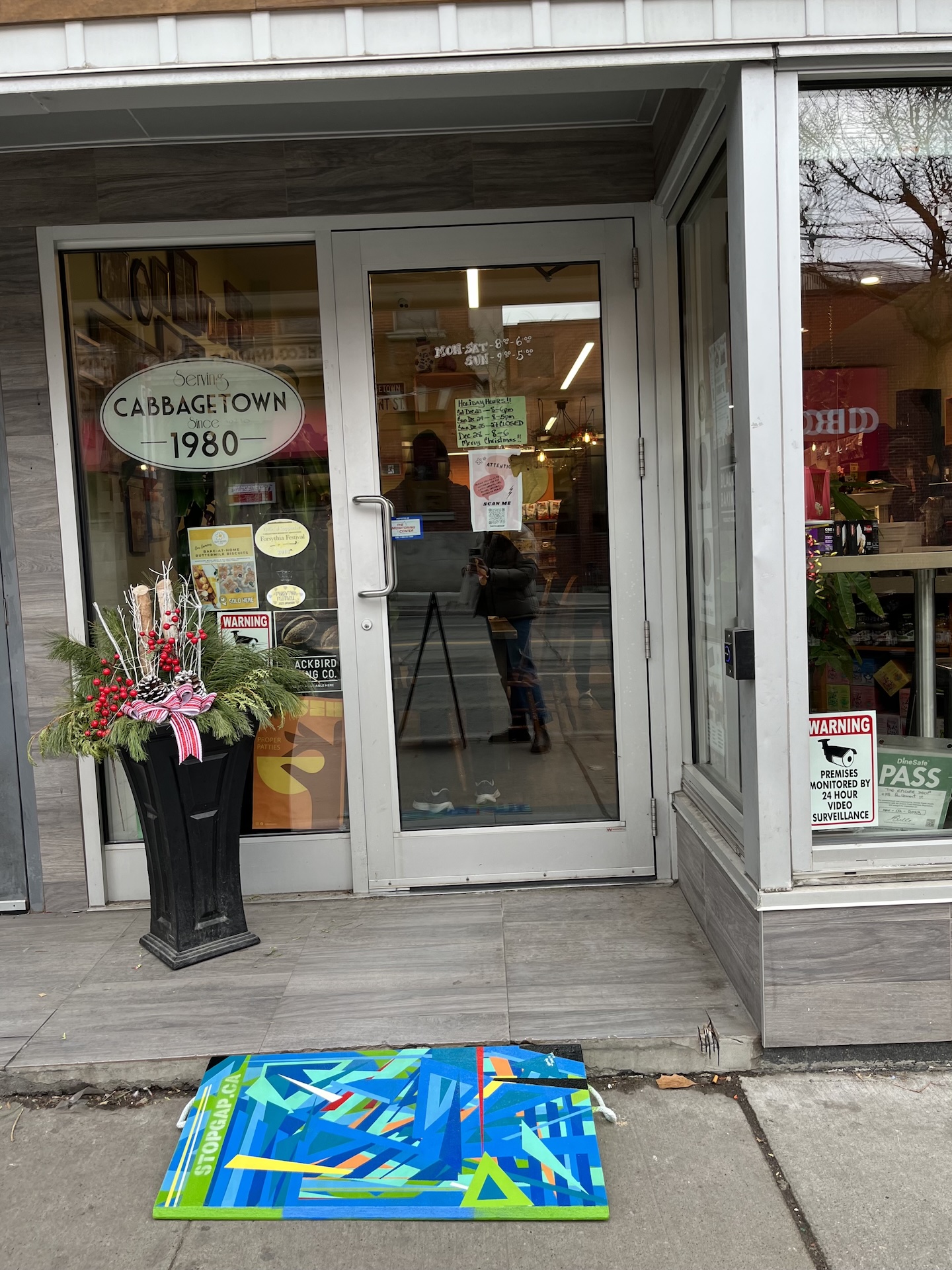
Artist credit: Gloria Swain
Photo credit: STEPS Public Art
The audio tracks can also be heard through the YouTube Playlist (or by playing the videos below).
Sincerest thanks to the artists Amanda Lederle, Gloria Swain, Wendy Lu, and Tristan Whiston for their important contributions to this accessible art pilot project.
Roundtable participants
Carmen Papalia
Born in 1981, Carmen Papalia is a nonvisual social practice artist with chronic and episodic pain. He uses organizing strategies and improvisation to address his access to public space, art institutions and visual culture. As a convener, he establishes welcoming spaces where disabled, sick and chronically ill people can build capacity for care that they lack on account of governmental failure and medical ableism. His work, which takes forms ranging from collaborative performance to public intervention, is a response to the harms of the Medical Model of Disability.
David Bobier
David Bobier is a hard of hearing and disabled media artist whose creative practice is exploring multi-modal means of art making. His other focus is in developing accessible vibrotactile technology as an artistic and experiential medium that lead to the establishment in 2014 of VibraFusionLab, a multi-sensory creative research centre now situated in Hamilton that has an international reputation as a leader in accessibility for the Deaf and Disability Arts movement.
Igor Samardzic
Igor is a disabled urban planner and city builder. Igor’s career has included extensive experience as a volunteer, community builder, and planner through both the public and private sectors. His contributions have led to the development and support of accessible public transit, streetscapes, pedestrian pathways and cycling infrastructure, new affordable housing options, community arts/murals, public space activations and reclaiming and repurposing green spaces for community uses. He has written numerous reports including on Accessible Complete Streets, and is currently writing one titled Accessible Public Consultations for Municipalities. He currently sits on the boards of a number of nonprofits, being a vocal champion for people with disabilities, and advocating for a more equitable and liveable city that works for all.
Jenel Shaw
Jenel Shaw is a self-taught visual artist who focuses mainly on ceramics. Jenel graduated with her masters in Disability Studies from the University of Manitoba. Her dissertation, An Autoethnological Study of Art as a Tool of Empowerment, examined her own experiences with mental illness and disability art. Jenel is a passionate advocate for the disability community, with a focus on accessibility in the arts. Jenel is the executive director of Arts AccessAbility Network Manitoba, the liaison director for the Manitoba Cultural Society of the Deaf and the Co-Chair of the Manitoba Artist-Run Centres Coalition.
Jamie Pritchard
Jamie is the General Manager of the Downtown Stratford Business Improvement Association (BIA).
Mo Thunder
Mo (they/them) is a nonbinary/fluid, neurodivergent multidisciplinary artist and facilitator who grew up in a small town along the St. Clair River, they currently live in T’karonto (Toronto), which has been home for over a decade. They are Haudenosaunee (Oneida Nation of the Thames), French-Canadian and Anishinaabe (Aamjiwnaang First Nation).
Luke Anderson
After sustaining a spinal cord injury in 2002, Luke Anderson was all of a sudden introduced to a world that’s not well suited for a wheelchair user. His frustration encountering access barriers led him to co-found the StopGap Foundation, which raises awareness about the importance of a barrier free and inclusive society. StopGap works with different community leaders across Canada delivering education and resources that inspire societal perspective shifts, the removal of barriers in the built environment, and policy change. Their iconic brightly painted ramps can be found in communities all over Canada, helping ensure our society’s collective understanding about the importance of accessibility and inclusion continues to advance and grow.
Luke is a licensed professional engineer, a nature lover, an avid meditator, an aspiring harmonica virtuoso, and is the recipient of a Governor General’s Meritorious Service Medal.
Natasha “Courage” Bacchus
I am Natasha “Courage” Bacchus. I’m a former 3 times Deaf Olympian Sprinter. I began working as an actress in 2019 – and since then I’ve performed in: ‘The Black Drum’, ‘The Two Natasha’s’, ‘21 Black Futures’, and season four of ‘The Coroner’ on Netflix. I have participated as an art collaborator with numerous theater and film productions in Canada. I had multiple positions including an interdisciplinary visual artist, art accessibility consultant, Deaf theater interpretation and activist for IBPOC Deaf art community in terms of expanding IBPOC Deaf artists representation.
Samantha Biglieri
Samantha Biglieri, MCIP, RPP is an assistant professor in the School of Urban and Regional Planning at Toronto Metropolitan University, and the director of the Health, Access + Planning (HAP) Lab. As a planner, her research uses critical approaches at the intersection of planning and health/wellbeing, making connections with practice to build inclusive and accessible communities.
Resources
Through the Accessible Art and Placemaking initiative, cultural planning and other public art initiatives, STEPS has gathered many resources that we feel may be of value to you and our communities. This is by no means intended to be an exhaustive list. We encourage you to share resources that you have found valuable with the STEPS team.
Access the resources through the Accessible Art and Placemaking Toolkit (PDF via Dropbox) or browse through our general community resources for more.
Supporters
The Accessible Art and Placemaking Project is mainly funded through the City of Toronto’s Main Street Innovation Fund as part of Government of Canada support through the Federal Economic Development Agency of Southern Ontario (FedDev Ontario).
This fund supports projects developed by or with Business Improvement Areas (BIAs) that explore innovative solutions to urban challenges.

This project is also part of I HeART Main Street in partnership with RBC, and generously supported by Canada Council for the Arts and Ontario Arts Council.
We extend our gratitude to the community leaders, practitioners, advisory members, research partners, pilot project participants, and program funders for their support.
